The Oberkommando West is the German faction introduced in The Western Front Armies expansion pack, along with the US Forces.
Overview

Oberkommando Wests Symbol
The Oberkommando faction is intended to represent Germany's military situation near the end of the Second World War. As a faction, they have access to cutting-edge military innovations, such as STG.44 Infrared scopes and the Jagdtiger heavy tank destroyer, but they receive resources at a lower rate than the other factions as they lack the ability to construct munitions and fuel caches. Unlike the Ostheer Wehrmacht, the Oberkommando forces are aggressive oriented as their early forces are strong enough to rush territory points but generally have difficulty holding them. Deployed units and vehicles must be carefully preserved, as the Oberkommando generally have difficulties collecting the resources to replace destroyed vehicles or squadrons with the same efficiency as other factions, mainly because they cannot construct munitions and fuel caches. This emphasis on unit preservation is also reflected in the Oberkommando's experience system: unlike the other faction units, which can only gain a total of three experience ranks, all Oberkommando units can achieve a total of five experience ranks.
Basic Force Composition
| Oberkommando West | |
|---|---|
| Command Headquarters | |
| Battlegroup Headquarters | |
| Mechanized Regiment HQ |
|
| Schwere Panzer HQ | |
| Doctrine units |
|
Most early-game Oberkommando vehicles are dedicated to serve a single role in the order of battle, and they excel at their intended role. For example, the pz.II-"Luchs" light tank can decimate infantry units, and is fast enough to pursue and eliminate retreating enemy squads or damaged light vehicles with relatively low risk to itself. The Kübelwagen is a scout vehicle weak in combat but has the ability to capture points, making it effective at raiding undefended enemy territories and cutting supply lines. However, most OKW vehicles are not flexible outside of a specific role, and Oberkommando vehicles need to be supported in order to compensate for potential weaknesses. Certain vehicles such as the Tiger II "King Tiger", are more versatile, but carry a considerably higher cost in resources to match their versatility.
The strength of the OKW's infantry can vary tremendously depending on how a match has progressed. In stark contrast to the non-combat oriented construction units of other factions, the Oberkommando faction deploys 'Sturmpioneers' as their battlefield construction unit, which are tough medium infantry that can even devastate regular infantry units in the right conditions. The 'Volksgrenadiers' comprise the backbone infantry unit for the OKW, and enter the battlefield at a slight disadvantage to the allied infantry - however, Volksgrenadiers gain veterancy levels quickly, meaning that their reliability in combat can improve dramatically by the end of a battle. The OKW can also deploy Obersoldaten infantry, which are nearly unstoppable when fighting other infantry, but have no equipment to effectively engage enemy vehicles. To bolster their standard infantry, the OKW can also have a selection of call-in infantry that thrive under particular combat conditions: Panzerfusiliers often gain the upper hand in drawn-out firefights over long range, while Fallschirmjagers are more suited to urban environments with lots of cover and sporadic, close-range skirmishing.
In terms of their base-building structure, the OKW vaguely resembles the British Army from CoH: Opposing Fronts. In contrast to being restricted to building structures inside of their designated base area, Oberkommando forces utilize mobile sWS Supply Half-tracks, which can deploy into a static support structure in any connected friendly territory on the battlefield. An OKW player can deploy additional sWS halftracks for a relatively small cost. Although the sWS halftrack can enter and navigate the battlefield at no cost, deploying into a base structure requires a variable amount of fuel and manpower (depending on which structure type is chosen). A sWS can deploy into one of three different structure types, which - in addition to making a different set of units available - also offer unique forms of support to nearby operations. Examples range from a base structure providing passive repairs to nearby tanks, to a base structure using a mounted 37mm flak cannon to forcibly deny enemy movement through a large area.
| Company of Heroes series factions | |
|---|---|
| Company of Heroes | |
| Company of Heroes 2 | |
| Company of Heroes 3 | |
